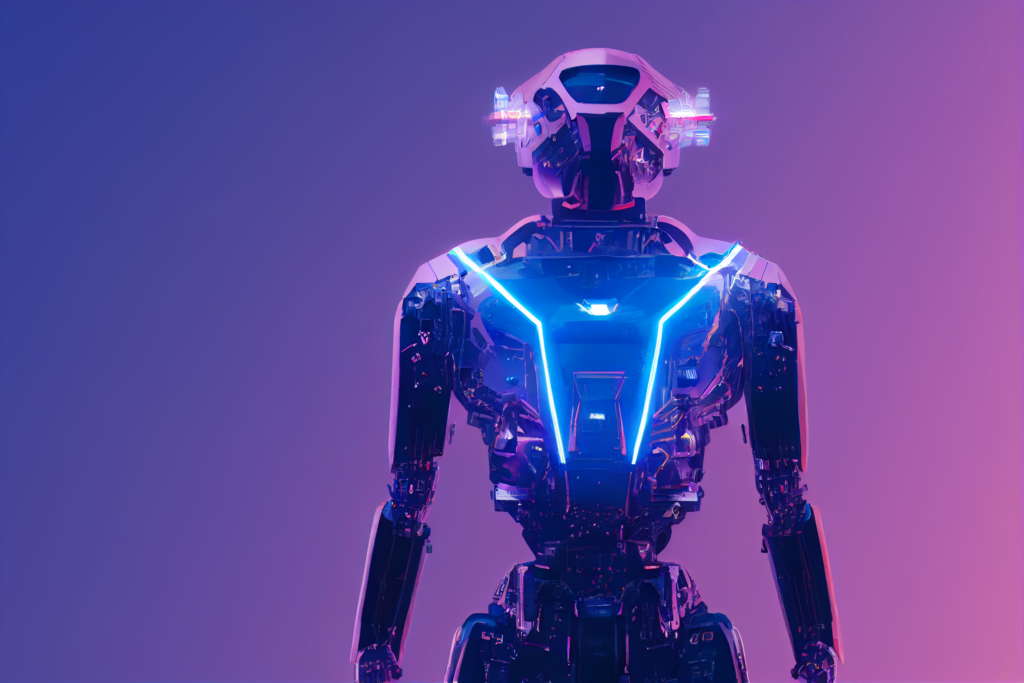Artificial Intelligence (AI) and Machine Learning (ML) are two of the most talked about technologies in recent years, and for good reason. These powerful tools have the potential to revolutionize the way we live and work, from improving healthcare and transportation to helping us make better decisions and solve complex problems.
At their core, AI and ML are all about teaching computers to think and learn like humans. AI is a broad term that refers to the overall field of creating intelligent machines, while ML is a specific subfield that deals with teaching computers to learn from data.
One of the key advantages of ML is that it allows computers to automatically improve their performance over time, without being explicitly programmed. This is done through a process called training, where the computer is given a large dataset and then uses algorithms to learn from it. The more data the computer is exposed to, the better it becomes at making predictions and identifying patterns.
One of the most popular forms of ML is called supervised learning, which is used to train a computer to recognize patterns in data and make predictions. In this type of learning, the computer is given a dataset with labeled examples (i.e., the correct answer is already known) and uses this data to learn how to make predictions. For example, a computer could be trained to recognize faces in photos by being shown thousands of labeled photos of faces.
Another popular form of ML is called unsupervised learning, which is used to train a computer to find patterns in data without any labeled examples. This is useful for tasks such as clustering and dimensionality reduction, where the goal is to find structure in data without knowing what the structure looks like.
One of the most exciting areas of AI and ML is deep learning, which is a type of ML that uses artificial neural networks with many layers to learn from data. This type of learning is particularly good at tasks such as image and speech recognition and has been used to create some of the most advanced AI systems in existence today.
One of the most popular forms of deep learning is called convolutional neural networks (CNNs), which are used for image recognition. CNNs are inspired by the way the human visual system works and are particularly good at recognizing patterns in images. They have been used to create systems that can accurately recognize objects in images, such as cars, buildings, and animals.
Another popular form of deep learning is called recurrent neural networks (RNNs), which are used for speech and language recognition. RNNs are particularly good at recognizing patterns in sequences of data, such as speech and text. They have been used to create systems that can accurately transcribe speech and translate text.
One of the most promising areas of AI and ML is reinforcement learning, which is used to train a computer to make decisions in a dynamic environment. In this type of learning, the computer is given a goal or a task to complete and then learns how to complete the task by receiving feedback in the form of rewards or penalties. For example, a computer could be trained to play a game by receiving points for making good moves and losing points for making bad moves.
AI and ML are already being used in a wide range of applications, from healthcare and transportation to finance and entertainment. In healthcare, AI is being used to analyze medical images and help doctors make more accurate diagnoses. In transportation, ML is being used to improve the efficiency of self-driving cars and reduce accidents. In finance, AI is being used to detect fraud and make better investment decisions. And in entertainment, ML is being used to create more realistic special effects in movies and video games.
Despite all the benefits that AI and ML can bring, there are also concerns about the potential negative impacts of these technologies. One concern is that AI and ML could lead to job displacement, as machines become better at performing tasks that were previously done by humans. Another concern is that AI and ML could be used to create biased or unfair systems, as the algorithms used to train these systems can be influenced by the data they are trained on. There is also the concern that AI and ML could be used to create autonomous weapons or other dangerous technologies.
To address these concerns, it is important to ensure that AI and ML are developed and used in a responsible and ethical way. This means that we need to put in place safeguards to ensure that these technologies are used for the benefit of all people, and not just a select few. It also means that we need to be transparent about how these technologies work so that people can understand their limitations and potential biases. In conclusion, AI and ML are powerful technologies that have the potential to revolutionize the way we live and work. They are already being used in a wide range of applications and have the potential to bring many benefits to society. However, it is important to develop and use these technologies in a responsible and ethical way, to ensure that they are used for the benefit of all people.
In conclusion, AI and ML are powerful technologies that have the potential to revolutionize the way we live and work. They are already being used in a wide range of applications and have the potential to bring many benefits to society. However, it is important to develop and use these technologies in a responsible and ethical way, to ensure that they are used for the benefit of all people.

